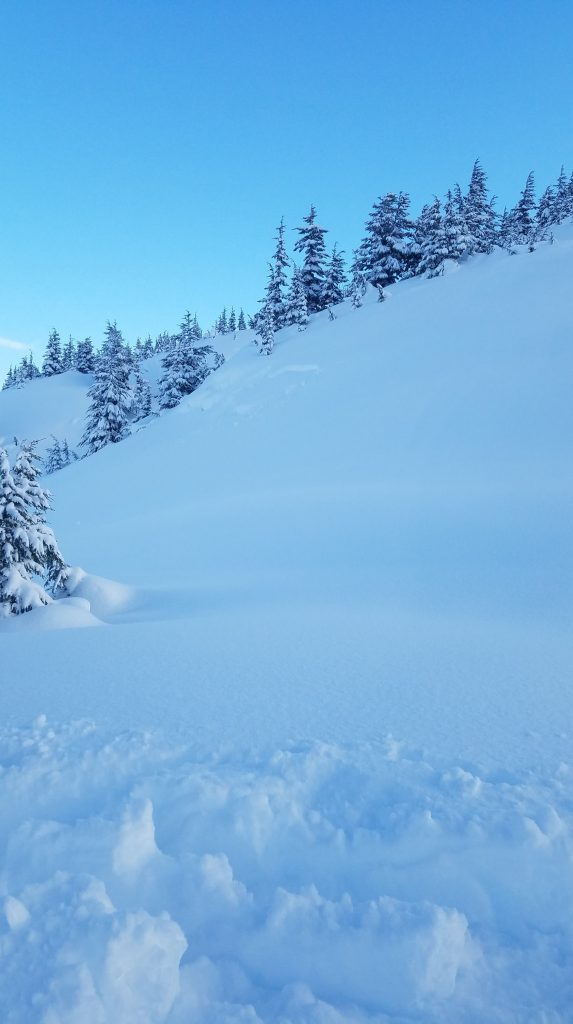Turnagain Pass
|
|
Hurricane force wind plus another foot of new snow overnight has brought the avalanche danger to HIGH in the Alpine. Natural storm snow avalanches 2-4′ thick are likely while this second storm hits. The avalanche danger is CONSIDERABLE in the treeline and below treeline band where natural storm snow avalanches may occur and human triggered avalanches are likely. Wet snow avalanches below 1,000′ are possible with forecast rising temperatures.
Travel is NOT recommended in the Alpine, above the trees, or in runout zones at all elevations. Cautious route-finding and conservative decision-making are essential if choosing to travel in the trees.
GIRDWOOD: Roof avalanches are expected with warming temperatures. Pay attention to children and pets and where you park your car.
SUMMIT LAKE / JOHNSON PASS / LYNX DRAINAGE: South of Turnagain Pass, keep in mind old buried weak layers exist and there is a potential for very large avalanches to occur that break near the ground.
- Anchorage Front Range: Avalanche triggered yesterday near Peak 3 in the Chugach Front Range – Head’s up! Please see report sent in yesterday.
- Parking may be difficult along Turnagain Pass. Please be aware of parking safely and avoid blocking unplowed lots as DOT crews work to clear roads and parking areas.


